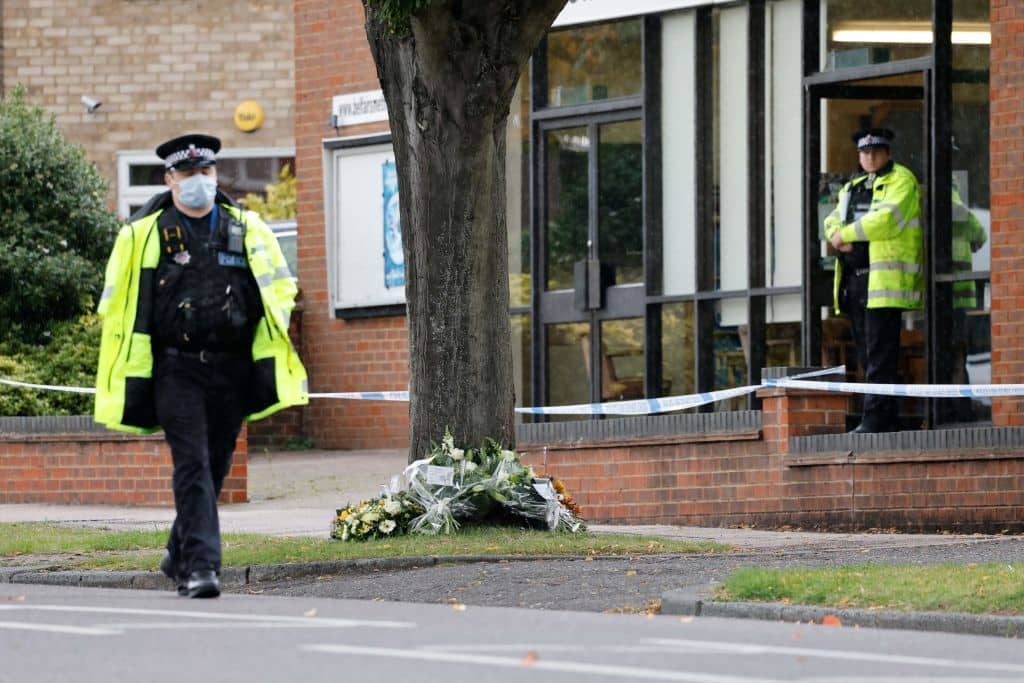Amongst the many appalling details from the murder of Sir David Amess, one detail jumped out at me in yesterday’s reports. Father Jeffrey Woolnough, a Roman Catholic priest, arrived at the police cordon stretching across Eastwood Road North offering to administer the Last Rites to the MP, whom he knew to be a practising Catholic. But he was not allowed through. “I was refused entry,” he said later. And he added that, as a consequence, he was unable to issue the sacrament. “I’m so very sorry that I was not allowed to minister to Sir David at the end. The police had their instructions which I have to respect and abide by.”
But why on earth was he refused entry? For a Catholic there is nothing, nothing, more important than being in a state of grace when you die and go to God. That means, ideally, receiving absolution for the sins of your life from a priest. It was precisely because of the nature of the scene – a potentially fatal stabbing – that a priest was necessary. It was because a man, known to be a Catholic, was facing death, that the priest should have been present. If the police had had been better briefed about the nature of the Catholic faith and the importance attached to the Last Rites, which sends a soul prepared into the next word, then they would have been doing their best to get Fr Jeffrey to the scene with all speed. As they should be if a priest turns up at any scene where there is a chance that someone will die.
A priest is an emergency service
It’s not known whether Sir David was alive when the priest arrived at the scene, but he still should have been allowed through. Nothing should come between a dying man and the mercy of the Church. Of course the police were dealing with a tremendously difficult situation and would have been shocked and confused – how could they not have been? – but it doesn’t excuse this failure of judgment, which we can assume stems from a failure of training.
The Essex police have since provided The Spectator with the following statement about what happened. They don’t deny that the priest was denied access.
‘As with any police incident, it is of the utmost importance that we preserve the integrity of a crime scene and allow emergency services to tend to those in need. A cordon is put in place to secure and prevent contamination of the area. Access into a scene is at the discretion of the investigating officers. This is a fundamental part of any investigation to ensure the best possible chance of securing justice for any victim and their family. A cordon can also be used to restrict an area for emergency services to administer potentially life-saving medical treatment, in as much privacy as possible and to allow officers to confirm that an area is safe to enter.’
The most troubling element of the statement is that the police wanted to ‘allow the emergency services to tend to those in need. A priest is an emergency service. In the case of Sir David, the priest was someone who could help see him into the next world, not just keep him in this one. You don’t have to share a belief in the efficacy of confession to go along with this; you just need a very elementary knowledge of and respect for the faith to refrain from standing between a confessor and a dying man. As for the reference to the ‘emergency services administering potentially life-saving treatment,’ Catholic priests are used to operating together with medics for precisely this reason.
You might like to know that Essex police recently engaged in that exercise in cultural conformity, Hate Crime Awareness Week. Perhaps in future, some awareness of Christianity might be part of the training.







Comments